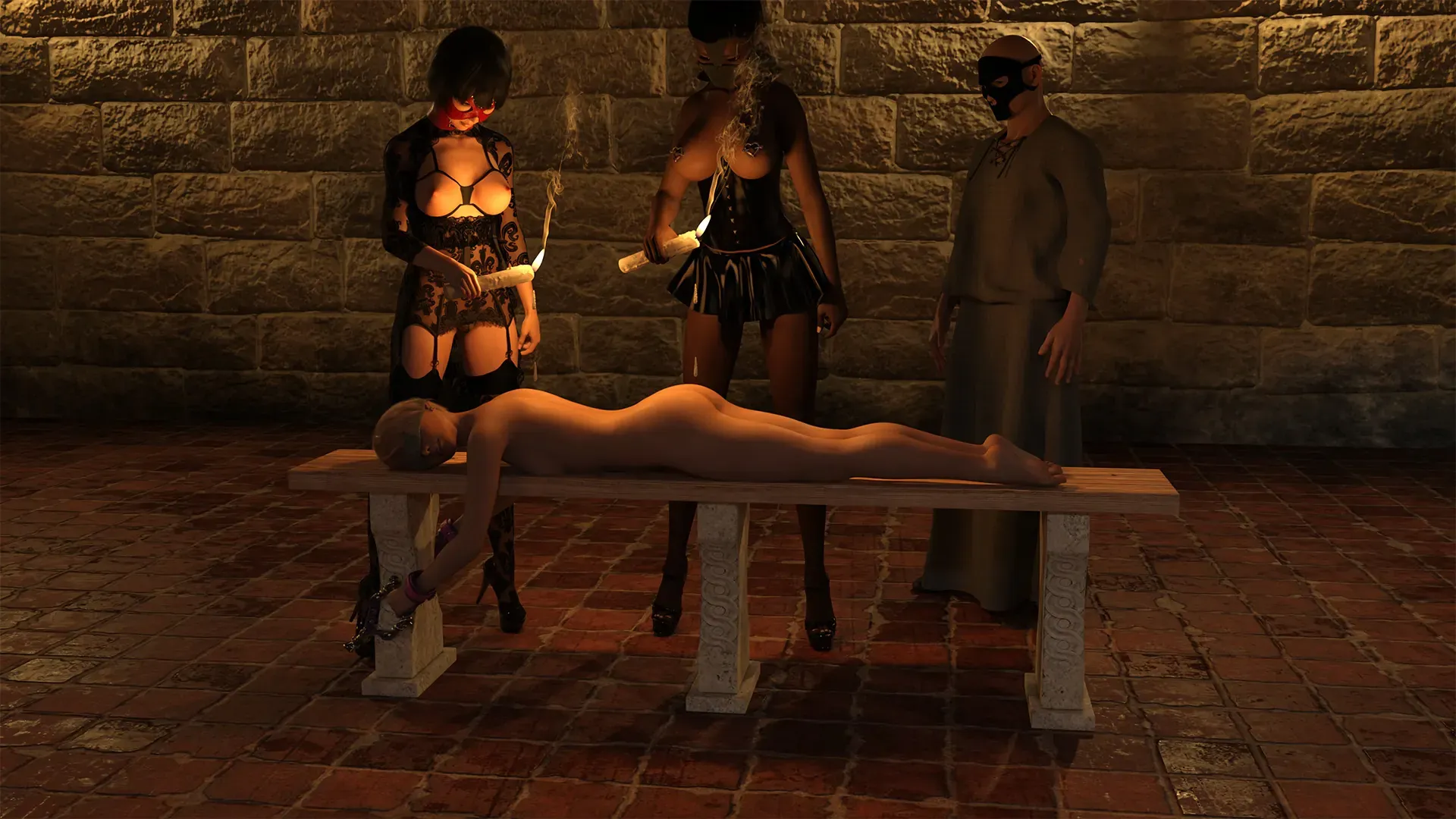
Home Trainer – Domestic Corruption
Play Home Trainer – Domestic Corruption
Home Trainer – Domestic Corruption review
Master the visual novel experience with story insights, gameplay mechanics, and character progression tips
Home Trainer – Domestic Corruption stands out as a compelling visual novel that combines narrative depth with interactive gameplay. Developed by deviant_smite, this game follows David’s journey after a devastating fire destroys his family home, forcing him to seek refuge with his estranged aunt Eileen and cousin Nina. The experience blends emotional storytelling with engaging mechanics, offering players multiple pathways through the narrative. Whether you’re new to visual novels or a seasoned player, understanding the game’s core systems, character dynamics, and progression mechanics will enhance your overall experience and help you unlock all available content.
Understanding Home Trainer – Domestic Corruption: Story, Setting, and Core Gameplay
The Narrative Foundation: David’s Journey and Family Dynamics
Let me tell you about a game that completely redefined what I thought visual novels could be. 🎮 When I first booted up Home Trainer – Domestic Corruption, I expected a light-hearted fitness sim. Boy, was I wrong—in the best way possible. This game delivers one of the most emotionally gripping Home Trainer Domestic Corruption story experiences I’ve encountered, weaving a tale that’s equal parts heartbreaking and hopeful.
The narrative follows David, a young man whose world is shattered when a tragic fire claims his parents and leaves him homeless. 😢 I remember playing through that opening sequence, feeling that visceral shock right alongside him. The game doesn’t pull punches with its emotional weight—you truly feel David’s displacement and desperation. His only option becomes reconnecting with his aunt Eileen and cousin Nina, relatives he hasn’t seen in years due to some unexplained family rift.
What makes this visual novel relationship building so compelling is how authentically these reconnections unfold. 🏠 When David first arrives at his aunt’s house, the tension is palpable. Eileen harbors obvious reservations about taking him in, while Nina presents this fascinating blend of curiosity and caution. I found myself genuinely caring about bridging these emotional gaps, because the writing makes these characters feel like real people with complex motivations.
The family dynamics here are masterfully crafted. Through subtle dialogue choices and environmental storytelling, you gradually uncover what caused the original separation between David’s parents and Eileen. It’s not spoon-fed to you either—you piece together the family history through overheard conversations, old photographs, and carefully chosen questions. This approach to Home Trainer game progression makes you an active participant in uncovering the truth rather than a passive observer.
Game Mechanics and Interactive Elements Explained
Now let’s dive into what makes this game tick! 🕹️ The visual novel gameplay mechanics in Home Trainer – Domestic Corruption are surprisingly deep while remaining accessible. If you’re new to visual novels, this is actually a fantastic starting point because the systems are intuitive yet meaningful.
The core gameplay loop revolves around exploring Eileen’s house and making choices during conversations. 🗣️ Every day in the game is divided into time segments, and you decide how David spends each one. Will he help with household chores to earn Eileen’s trust? Maybe he’ll try to break through Nina’s defensive walls? Or perhaps he’ll investigate family secrets in the attic? These decisions form the backbone of the character interaction system.
Here’s a practical tip from my own playthrough: pay attention to character schedules! 📅 Eileen might be more receptive to serious conversations in the evening after work, while Nina opens up during shared activities. I learned this the hard way when I tried to have a deep heart-to-heart with Eileen while she was rushing to get ready for work—let’s just say it didn’t go well!
Pro Tip: Keep a mental map of where characters tend to be at different times of day. This knowledge becomes crucial for advancing relationships and unlocking special scenes.
The interactive choice consequences are where this game truly shines. Early in my first playthrough, I faced a seemingly minor decision: when Nina offered to show me around town, I could either accept enthusiastically, decline politely, or ask if Eileen would join us. I chose the enthusiastic acceptance, which unlocked an entire subplot about Nina’s social life and personal struggles that would have remained hidden otherwise.
This brings me to a crucial example of how choices ripple through your experience:
Early Game Choice Impact Example:
During day three, Eileen asks if you’d like to contribute to household expenses once you get back on your feet. If you agree, it demonstrates responsibility and gradually unlocks opportunities to take on part-time work later. If you deflect or refuse, Eileen’s trust meter grows much slower, and certain career-related story branches remain permanently closed. I discovered this when comparing notes with a friend who made different choices—we were essentially playing different games by the mid-point!
The exploration elements add wonderful texture to the experience. 🕵️♂️ The house itself becomes a character, with different rooms revealing family history through interactive objects. Finding an old family photo album in the basement completely changed my understanding of the family’s past conflicts, which then informed how I approached difficult conversations.
| Feature | Description | Impact on Experience |
|---|---|---|
| Story Depth | Multi-layered narrative with hidden family secrets | Creates compelling motivation to explore every dialogue path |
| Graphics Quality | Detailed 3D environments with dynamic lighting | Enhances immersion and emotional connection to settings |
| Gameplay Mechanics | Time management, relationship building, puzzle solving | Provides strategic depth beyond simple dialogue choices |
| Character Count | 6 main characters with independent story arcs | Ensures rich, varied interactions across multiple playthroughs |
| Replay Value | Branching narrative with significantly different outcomes | Encourages experimentation with different choice paths |
Character Interactions and Relationship Building
The heart of this experience—what kept me coming back for multiple playthroughs—is undoubtedly the brilliant character interaction system. 👥 Each relationship in Home Trainer – Domestic Corruption feels uniquely nuanced, with its own rhythm and requirements for growth.
Let’s start with Eileen, who became one of my favorite characters in any visual novel. 🧓 Her initial guardedness isn’t just narrative flavor—it manifests mechanically through her trust meter. I found that consistent, small gestures worked best with her. Offering to help with dinner, keeping your space clean, remembering details she mentions about her work—these incremental trust builders eventually lead to her sharing vulnerable moments about why the family became estranged.
Nina’s relationship path requires a completely different approach. 🎭 As a teenager navigating her own complicated emotions about suddenly gaining a housemate, she responds better to genuine interest in her passions than to forced familial bonding. In one playthrough, I discovered she’s an aspiring artist, and by asking about her sketchbook (rather than pressing about family matters), I unlocked beautiful scenes where we’d draw together in the garden.
The supporting characters each offer unique dimensions to the Home Trainer Domestic Corruption story. There’s Mark, Eileen’s coworker who becomes either a mentor or rival depending on your choices; Mrs. Gable, the nosy neighbor whose gossip can provide valuable family insights; and Dr. Evans, a family friend whose perspective on past events can dramatically alter how you understand the central conflict.
What makes the visual novel relationship building so satisfying is how organically these connections develop. 💖 The game avoids simple “like/dislike” meters in favor of multi-faceted relationship states. A character might trust you with personal secrets while simultaneously being frustrated with your life choices. This complexity mirrors real human relationships far better than most games in this genre.
The Home Trainer game progression is deeply tied to these relationships. Certain story beats only trigger when you’ve reached specific relationship thresholds with multiple characters. During my second playthrough, I focused heavily on building rapport with Eileen while somewhat neglecting Nina, which resulted in Eileen confiding family secrets much earlier—but at the cost of Nina becoming increasingly distant and eventually leaving to stay with friends for several days.
This brings us to the magnificent multiple endings visual novel aspect. 🎯 Without spoiling anything, I’ll share that my first ending came as a complete surprise—I thought I was making all the “right” choices, but I’d overlooked how my approach was affecting characters I considered secondary. The game tracks your impact on everyone, and the final outcomes reflect the web of relationships you’ve woven (or neglected).
The beauty of these multiple endings visual novel outcomes is that they all feel earned rather than arbitrary. 🙌 When I compared my “moderately successful” first ending with the “ideal family reconciliation” ending I achieved later, I could pinpoint exactly where my earlier choices had diverged from the optimal path. This clarity makes repeated playthroughs feel purposeful rather than repetitive.
For those looking to maximize their experience, here’s my hard-earned advice about the interactive choice consequences:
- Balance your attention: Don’t hyper-focus on one character—the best endings require maintaining multiple relationships
- Embrace imperfection: Some of the most memorable moments come from “failed” interactions that reveal character depth
- Take notes: Seriously, keep a gaming journal! The subtle clues about character preferences are easy to miss but incredibly valuable
- Experiment freely: Save often and try approaches that feel counterintuitive—you’ll discover narrative layers you never knew existed
The visual novel gameplay mechanics ultimately serve this rich tapestry of human connection. Whether you’re navigating awkward family dinners, deciding how to spend limited free time, or choosing which personal questions to ask, every mechanic reinforces the central theme of rebuilding broken bonds. 🔨❤️
What continues to amaze me about Home Trainer – Domestic Corruption is how it transforms from a story about loss into a experience about finding new forms of family. The Home Trainer Domestic Corruption story stays with you long after the credits roll, and the sophisticated character interaction system ensures that no two players will have exactly the same emotional journey. If you’re ready for a visual novel that challenges both your heart and your strategic thinking, this is an experience you won’t want to miss. 🌟
Home Trainer – Domestic Corruption delivers a memorable visual novel experience that combines emotional storytelling with engaging interactive gameplay. From David’s compelling journey of reconnection and resilience to the intricate character progression systems and multiple narrative paths, the game offers substantial replay value for players seeking depth and meaningful choices. The beautiful 3D graphics, atmospheric design, and well-crafted character interactions create an immersive world that draws players into the story. Whether you’re exploring the aunt’s house, building relationships with characters, or uncovering the mysteries within the narrative, the game rewards engagement and exploration. With availability across multiple platforms and regular updates from developer deviant_smite, Home Trainer – Domestic Corruption continues to evolve as a standout title in the visual novel genre. Start your journey today and experience the multiple endings that await based on your unique choices and progression path.













